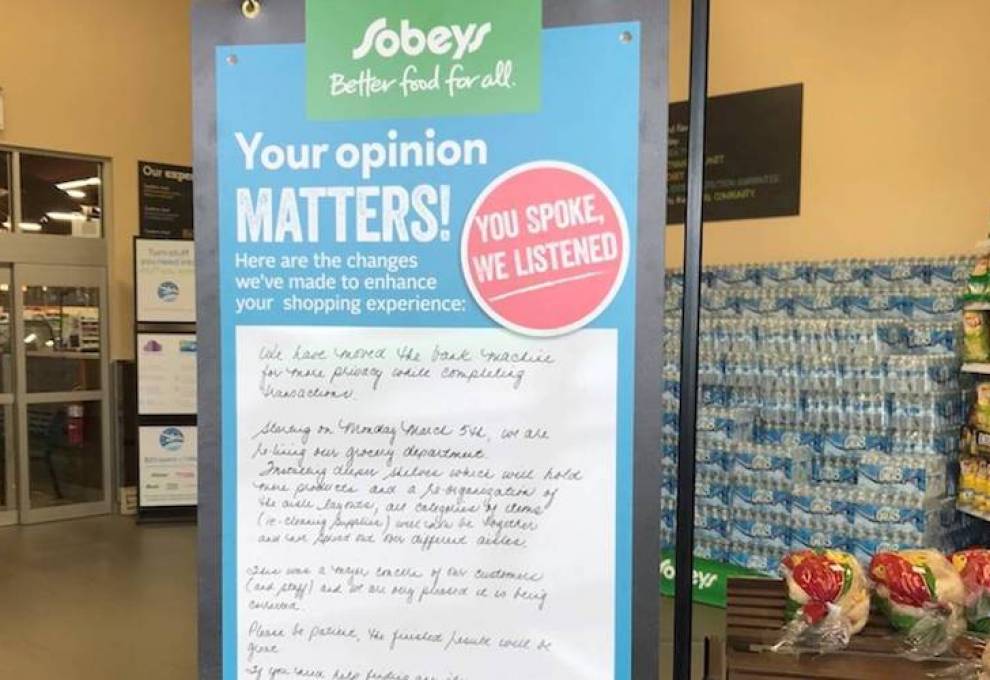
We are going to take a break this month to address some interesting questions received from a reader in southwestern Ontario. He sells at farm markets and on the farm as pick-your-own.
What are some of the best ways to monitor customer satisfaction? Ideally we want return customers, however, if they are dissatisfied -- one bad experience perhaps -- they just won’t come back. Can you bother your good customers too much with surveys, etc?
My experience has been that consumers like to provide their opinions and most appreciate being asked. Thank them when they participate and respond to the input. We know you cannot do everything they ask or you would be out of business. What people think they want and what they are willing to pay for are often two different things.
If you are selling at farmers’ markets or your own farm, these consumers are more invested in you than the people who shop at the big grocery stores. They want to know where their food comes from. Getting their direct feedback is one of the great benefits of direct selling.
You should always have a purpose when doing consumer research. Keep it brief and make sure the questions or format will give the information you need to make your business better. Explore different methods: a few questions when you sell the product, on line surveys or a brief survey to be completed at home when they consume the product.
When you do ask for input, make sure you acknowledge it and react. You can contact people one-on-one or you can put up a sign to illustrate how you are responding. One of the great benefits of public acknowledgement is that everyone sees it and they all get the message you listen to your customers.
We are transitioning to organic – can we really get a price bump for that? I do not want to be elitist and have higher prices that many people will not pay for – we just want to sell safe, healthy food. How do we communicate our transition -- and our values regarding this -- to our customers?
Consumers expect to pay more for organic. To date, industry has been able to maintain the standards for organic and most consumers see these products as more valuable. This does not mean they all buy them but they do recognize they are different and they would pay more. I do not see this as elitist -- I see it as consumers recognizing this production method costs more.
The demand for organics continues to be strong. I know every mainstream retailer would tell you they are looking for more organic product.
To understand the price increase that is sustainable I would recommend visiting your local stores to do some price checks. Compare organics to conventional to get an idea of the premium. It will be different by item and is impacted by many factors. Generally we would see a 15 to 25 per cent premium for organics. You should keep an eye on the pricing because it might change over time. As more organic product is available, the price will decrease and the gap will narrow.
Communicating your transition should come from the heart and with reasons for the change. If you believe this is better, explain why. Find creative ways to share your reasons in small doses. Consumers don’t like to be lectured and they don’t have time for too much information. Think of it as a billboard where you have three to five seconds to catch their attention.
Why do the grocery stores and restaurants get away with mis-labeling? For instance, the “Farmers Market” brand at Superstore, or Tim Horton’s “Farmers Breakfast.” These are anything but related to real farms, and are not genuine – however they are able to capture that feeling for customers.
I think you answered your own question. They do this to capture the feeling with consumers. Farmer is one of the most trusted words in the English language. In a world where there seems to be more dishonourable professions all the time, marketers cling to the good options.
In the case of the Loblaw items, farmers produce these products. Many do have the farmer’s photo on the package so you can determine where the product is grown. Farmers Market products are produced by real Canadian farmers who supply Loblaw. Recently I did see Farmer’s Market grape tomatoes that were the product of Dominican Republic. If consumers take the time to figure this out, I believe it could erode the Farmers Market brand. Yes a farmer in the Dominican Republic produced them but the line has been positioned as ‘local’ or ‘regional’ with the marketing that supports it.
In the Tim Horton’s example they are referring more to a style, which gives the connotation of healthy, hearty and wholesome. Consumers will have to be the judge of that.
My advice would be to continue to promote your vision of farming to your customers and potential customers. Assuming you resonate with them and tell your story, they will support you.
As a pick-your-own farm, we go to markets partially to sell but also partially to encourage people to come to our farm for a visit. Is this a mixed message? Should we just focus on selling fruit at the market?
This should be a great message for your consumers. You are offering them convenience when you bring your products to markets and you are offering them an experience when they visit your farm. In both cases you want to sell your products but you are addressing different consumer needs with the options.
Consumers tell us they want to know where their food comes from. I would encourage you to promote both offerings at both places. Sometimes people have a day to spend with family and friends where a farm visit is awesome and other days they have company coming for dinner and only time to make a trip to the farmers’ market. Make sure they understand that they can get your products in both venues.
Thank you for taking the time to submit some questions!
If you have any questions about selling your products please give me a call at (902) 489-2900 or send me an email at peter@skufood.com. Next month we will explore on-line selling of food.
WHAT’S IN STORE?
Sobeys responding to consumers
This sign is appearing in Sobeys stores recently. I felt it was appropriate given the questions we had this month. Everyone selling to consumers needs to listen and respond accordingly.
As a supplier you should read this on your way in. You might learn something about changes to stores or departments. I see different messages in different stores. This one references a reline in the grocery department so this will be their most up-to-date plan-o-grams. If I was a grocery supplier, I would be back to visit to ensure the new plan-o-gram reflects the agreements I have with Sobeys.

Add new comment